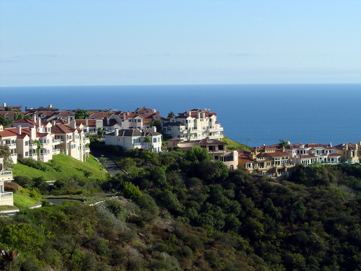
Low ridges dissect much of the Laguna Niguel area. Most of these mountain ridges, some of them attaining heights of one or two hundred feet, run northeast to southwest, delineating the hydrography of the area. Laguna Niguel’s other primary drainage, Salt Creek, has two forks in the southern half of the city, flowing southwards to the Pacific Ocean. Laguna Niguel itself has no border on the ocean. The city of Dana Point to the south separates Laguna Niguel and the Pacific. On the east side, Laguna Niguel is separated from San Juan Capistrano by a significant ridge running along Trabuco Creek. To the north lie Aliso Viejo and Laguna Hills.
Crown Valley and Alicia Parkways are the primary thoroughfares in the city. Crown Valley Parkway runs along Sulphur Creek and the northern fork of Salt Creek, bisecting the city northeast to southwest. Alicia Parkway, mostly a north-south road, follows Aliso Creek to where it joins Crown Valley Parkway in close proximity to Crown Valley Park and the city center. California State Route 73 runs north of the city, diverging from Interstate 5 just northeast of Laguna Niguel.
Moulton Parkway/Street of the Golden Lantern runs along the eastern boundary of Laguna Niguel. Pacific Island Drive/Camino del Avión follow parts of the west and south boundaries, respectively. Another major road, Niguel Road, runs roughly parallel and east of Crown Valley Parkway along the Salt Creek canyon. Marina Hills Drive is the largest crossing between Niguel Road and Golden Lantern, and Aliso Creek Road runs east-west through northern Laguna Niguel.